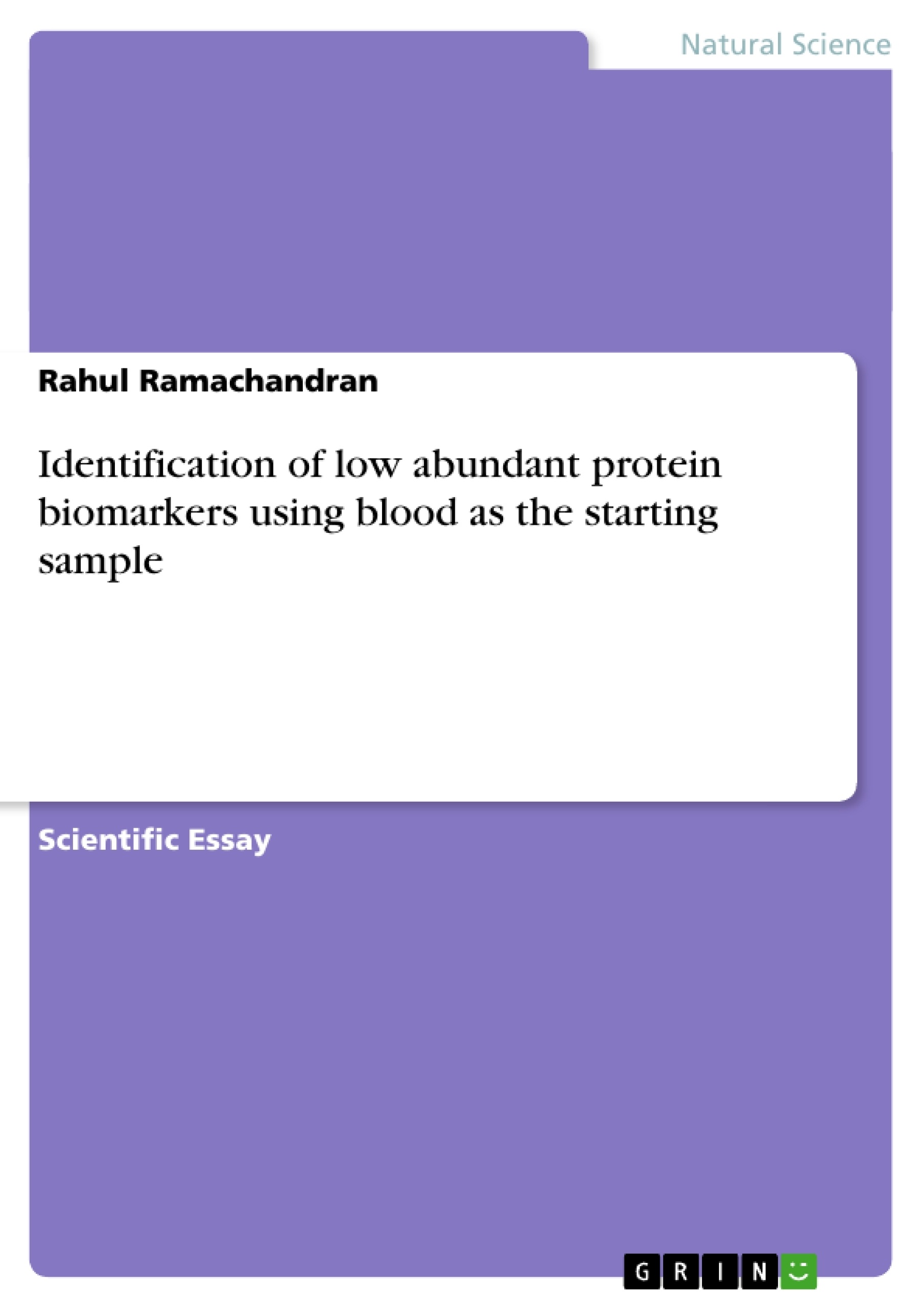Extrait
Identification of low abundant protein biomarkers using blood as the starting sample
Blood is the most popular biofluid used in proteomics to identify disease biomarkers. The potential of blood plasma or serum in diagnosis can be realized by the large amount of research and money spend on their study.
Interestingly, blood is a treasure trove of disease biomarkers. Every cell in the body leave a record of its physiological state in the form of waste or signal molecules in the products that it sheds to blood.. Hence, a small sample of blood could reveal the ongoing physiological and pathological states of tissues in the body(Liotta et al., 2003).
Important considerations for using blood as a starting sample
The first important consideration to be taken into account is the difference between plasma and serum. Plasma is the liquid component of the blood in which blood cells are suspended whereas, serum is protein solution left after the bulk of fibrinogen has been removed by conversion into fibrin clot, together with platelets. In addition, varying amount of other proteins also gets removed with fibrin clot by specific or non-specific interactions. And hence, the protein concentration of serum is less than plasma (Lum and Gambina, 1974, Landenson et al.: cited by Lundblad, 2005). Furthermore, the process/storage containers, time of clot retraction, centrifugation speed and temperature of storage also influence serum quality. The time between venipuncture and freezing, process/storage containers, centrifugation speed and temperature of storage are critical variables for plasma. Even though, it is difficult to control all these variables, but a standard operating procedure for blood collection could ensure reproducibility of the results(Lundblad, 2005).
Another factor to be considered is the dynamic qualitative and quantitative range of proteins in the blood. It is speculated that the dynamic range of protein concentration would be at least 106 or greater(Lundblad, 2005). Both serum and plasma have high protein content. But 99% of the blood protein consist of 22 proteins, major one being albumin, transferin, immunoglobulin and complement factors(Veenstra et al., 2005) (Figure 1). This dynamic range of proteins exceeds the analytical capability of current proteomic methods, thereby making detection of low abundance protein fraction which contains most of the undiscovered biomarkers extremely challenging(Tirumalai et al., 2003). The heterogeneity of plasma and serum makes prefractionation to remove highly abundant proteins, essential in proteomic analysis(Lundblad, 2005).
illustration not visible in this excerpt
Figure 1: Pie-chart showing relative contribution of proteins within plasma(Tirumalai et al., 2003).
The various steps involved in detection of low abundance proteins in blood samples are summarized below:
Prefractionation
Prefractionation is done to reduce the dynamic range of protein concentration for detecting lower abundance proteins in blood samples. It is done prior to 2-DE and MS analysis. Some of the major prefractionation techniques are discussed below.
Electrophoresis based methods:
- Multicomponent electrolyzers (MCE) with isoelectric membranes: MCEs with isoelectric membranes is a preparative version of IPG. They are used to purify proteins in a liquid vein by capturing them in an isoelectric trap formed by two immobiline membranes having a pI range that include the pI of the protein species under study. When this apparatus was used for the analysis of human plasma with a pH range of 3-6, an increase in acidic proteins was seen when compared to the whole plasma(Herbert and Righetti, 2000).
-GradiflowTM: It’s a preparative electrophoretic system that separates proteins on the basis of size and pI. The charge of the protein is controlled by the running buffer. Thus, when pH is below pI of the protein, a net positive charge develops. On the other hand, when the pH is above pI, protein gains a negative charge. The size separation is achieved by polyacrylamide membranes of specific pore sizes. Fitzgerald and Walsh (2010) used a prefractiontion device MF-10 that employed GradiflowTM technology to separate plasma proteins. They were able to compartmentalize highly abundant proteins, thereby increasing the visualization of lower abundance proteins by 2-DE.
- Citation du texte
- Rahul Ramachandran (Auteur), 2010, Identification of low abundant protein biomarkers using blood as the starting sample, Munich, GRIN Verlag, https://www.grin.com/document/271078
Devenir un auteur






















Commentaires